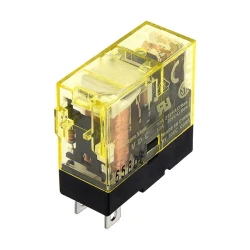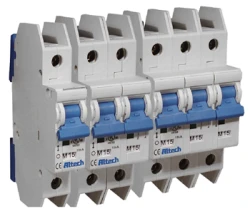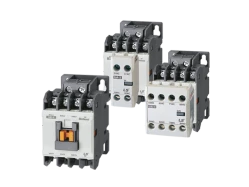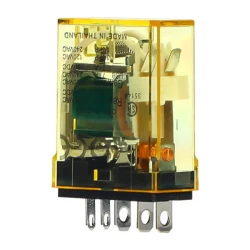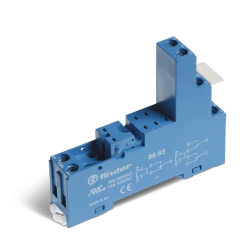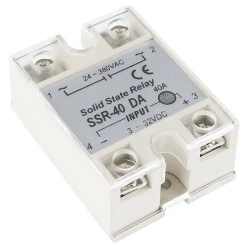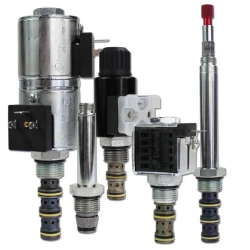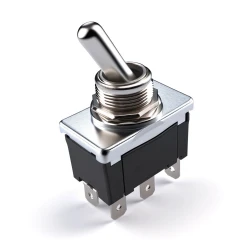Electromechanical Components
At Control Design Supply, we pride ourselves on our large and comprehensive selection of electrical parts, providing the best components to customers in any trade. Find the right electromechanical parts for your application today. Contact us today for more information or shop below.
What are Electromechanical Parts and Relays?
Simply put, electromechanical parts are devices that convert electrical signals to mechanical movement. They serve as a “bridge” between circuits and mechanical systems, translating electrical instructions into specific data or motions. Solenoids, switches, relays, actuators, and motors are all types of electromechanical components, each of which performs particular duties for machinery operation. Electromechanical devices are essential for many industrial operations, helping automate processes, control electrical circuits, and provide mechanical motion.Electromechanical relays are a specific type of switch that uses an electromagnet to control the opening and closing of contacts in a circuit. These devices are often used to switch high-power devices with a low-power signal in control systems. Relays are available in various styles, such as solid-state or timer models, and are commonly found in automotive systems, industrial control panels, and home appliances.
Electromechanical Components from CDS Midwest
At CDS Midwest, we provide a large array of high-quality electromechanical relays and parts for various applications. Our selection of electromechanical components includes:- Circuit Breakers: Circuit breakers are protective switches that automatically shut off power when they detect an overload or short circuit, preventing electrical damage.
- Contactors: A contactor is a switch that uses an electromagnet to control high-power electrical circuits, commonly for motors, lighting, or heating systems.
- Electromechanical Relays: Electromechanical relays are electrically operated switches that use an electromagnet to open or close circuits, providing switching functions to control circuits.
- Relay Sockets: Relay sockets are the mounting bases that securely hold electromechanical relays, allowing for easy installation, removal, and connection to electrical circuits.
- Solid State Relays: Solid-state relays are electronic switches that use semiconductor components (instead of moving parts) to open, close, and control electrical circuits with faster and more reliable operation.
- Solenoids: Solenoids are electromechanical switches that convert electrical energy into linear motion, which can be used to push, pull, or control mechanical systems.
- Switches: Switches control the flow of electricity in a circuit by opening or closing the electrical connection and can be manually or automatically activated for specific applications.
- Timer Relays: Timer relays are automation and process control devices that open or close electrical circuits after a preset time delay.
Applications of Electromechanical Relays and Components
Electromechanical parts are critical in many industries, ensuring successful circuits and operations. Find the best electromechanical parts for your industry. Contact us today and a team member will assist you.Aerospace
Electromechanical components like motors, relays, and solenoids are used in the aerospace industry for navigation control, landing gear operations, and engine systems. These devices are essential for precision, ensuring safety and highly reliable performance in critical aviation operations.Consumer Electronics
For consumer electronics, electromechanical components include things like motors, switches, actuators, sensors, and relays, which are used to power devices, control settings, and enable automation. Additionally, these parts are commonly used in appliances, including washing machines, refrigerators, and HVAC systems. Electromechanical components are highly beneficial for consumer electronics, helping control processes like temperature regulation, motion, timing, energy efficiency, and consistent performance.Energy Systems
Electromechanical relays, motors, and actuators are used in many energy production and distribution operations, including wind turbines, generators, and electrical substations. Using electromechanical parts for energy systems offers many advantages, including automation, increased safety, reliable energy flow, and efficient power generation, transmission, and distribution.Industrial Automation
For industrial automation operations, such as automated assembly lines and material handling systems, electromechanical parts are critical. Solenoids, actuators, motors, and other components control machinery movements and assist with high-precision tasks like moving, lifting, sorting, and assembling. Electromechanical components enable fast production, reduce manual labor, minimize breakdowns, and ensure accuracy for industrial automation.Medical
In the medical field, electromechanical components are used in a variety of diagnostic and therapeutic devices such as MRI machines, infusion pumps, and robotic surgery arms. Sensors, actuators, and motors assist with precision movements and automation, reducing errors in critical medical operations and maintaining high safety standards.Robotics
Robots and robotics applications rely on motors, actuators, solenoids, and sensors for proper functionality. These electromechanical components assist with movement, part manipulation, and feedback. Additionally, they provide precision control for operations involving robotic arms, CNC machines, and other robotic equipment. Electromechanical parts allow robots to function properly with minimal human intervention and accurate performance.Transportation
Electromechanical components control everything from steering, braking, and transmission systems to safety mechanisms like airbags and automated driving features. Motors, relays, and solenoids are essential for smooth operations, ensuring reliable mechanical motion in automotive control systems. Additionally, electromechanical relays and components are built to withstand harsh transportation environments, ensuring ongoing reliable electrical control and performance.Choose CDS Midwest as Your #1 Source of Electromechanical Components
We have over 50 years of experience, setting us apart as a reliable supplier of top-quality electronic components. Competitive pricing, fast deliveries, and industry knowledge ensure you get the right products for any project. We partner with trusted manufacturers to supply a wide range of products. Our trained experts are prepared to answer any questions and help determine the best custom electrical services and solutions for your needs.
Contact us with any questions or to learn more and speak with a specialist. Request a quote and start your order today.


